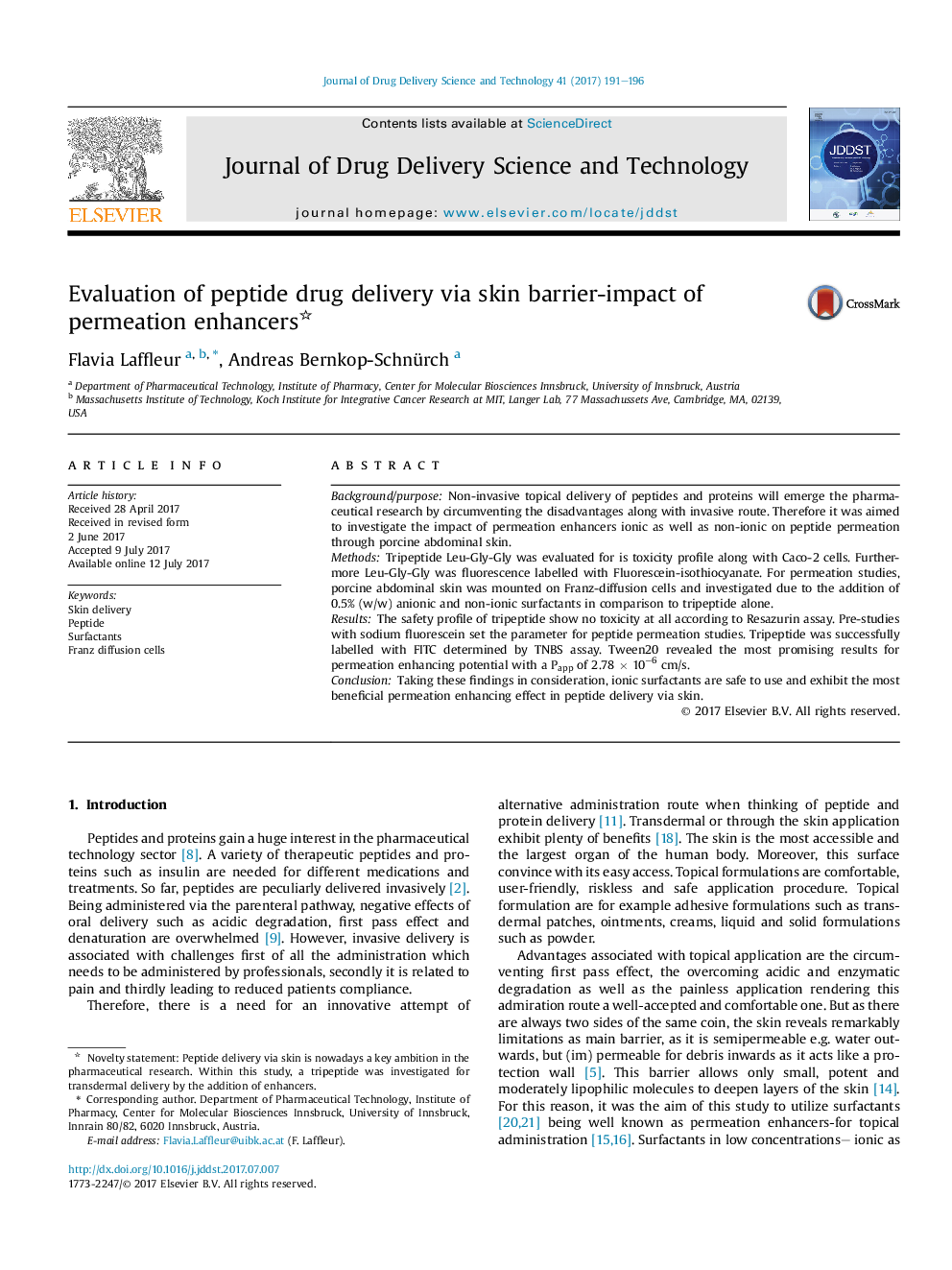| Article ID | Journal | Published Year | Pages | File Type |
|---|---|---|---|---|
| 5548049 | Journal of Drug Delivery Science and Technology | 2017 | 6 Pages |
Background/purposeNon-invasive topical delivery of peptides and proteins will emerge the pharmaceutical research by circumventing the disadvantages along with invasive route. Therefore it was aimed to investigate the impact of permeation enhancers ionic as well as non-ionic on peptide permeation through porcine abdominal skin.MethodsTripeptide Leu-Gly-Gly was evaluated for is toxicity profile along with Caco-2Â cells. Furthermore Leu-Gly-Gly was fluorescence labelled with Fluorescein-isothiocyanate. For permeation studies, porcine abdominal skin was mounted on Franz-diffusion cells and investigated due to the addition of 0.5% (w/w) anionic and non-ionic surfactants in comparison to tripeptide alone.ResultsThe safety profile of tripeptide show no toxicity at all according to Resazurin assay. Pre-studies with sodium fluorescein set the parameter for peptide permeation studies. Tripeptide was successfully labelled with FITC determined by TNBS assay. Tween20 revealed the most promising results for permeation enhancing potential with a Papp of 2.78Â ÃÂ 10â6Â cm/s.ConclusionTaking these findings in consideration, ionic surfactants are safe to use and exhibit the most beneficial permeation enhancing effect in peptide delivery via skin.
Graphical abstractDownload high-res image (89KB)Download full-size image
